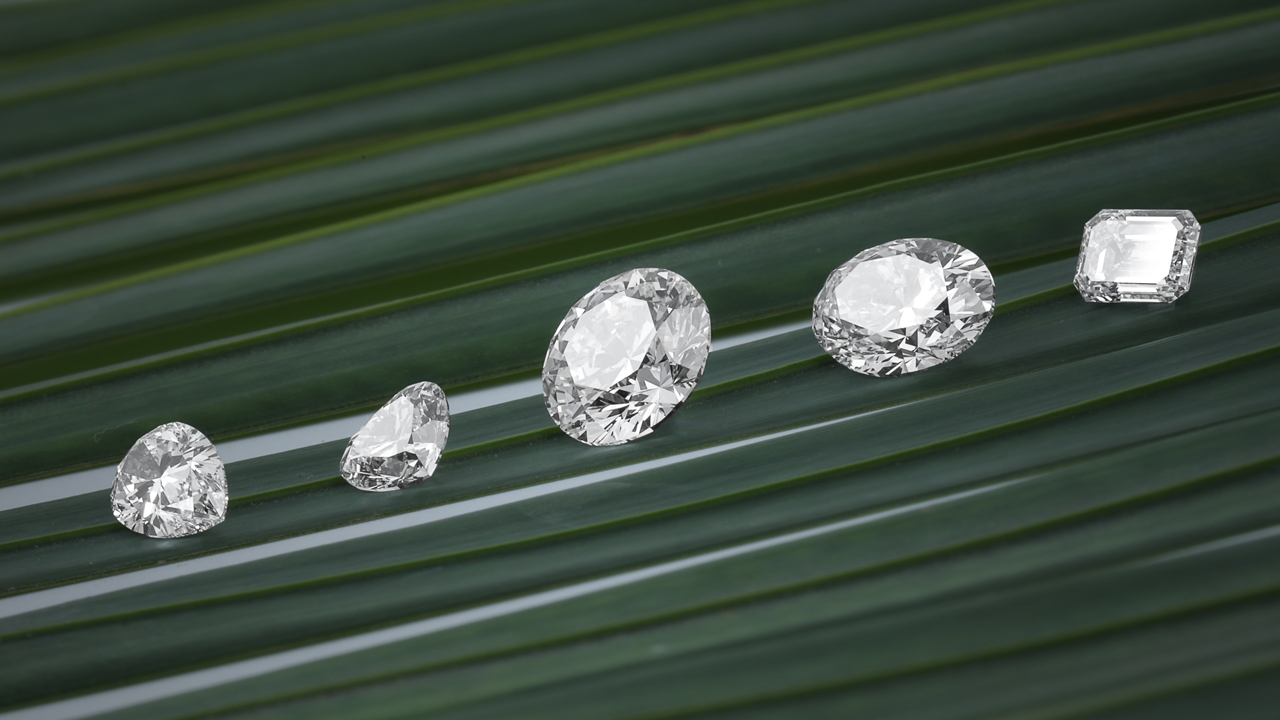
Lab Grown Diamonds: A Sparkling Revolution
In recent years, lab grown diamonds have surged in popularity, offering a brilliant alternative to traditional mined diamonds. With advancements in technology, the High Pressure High Temperature (HPHT) method has emerged as a frontrunner in creating these gems, revolutionizing the jewelry industry and reshaping consumer perceptions.
Table of Contents
Introduction to Lab Grown Diamonds
Lab grown diamonds, as the name suggests, are created in controlled laboratory environments rather than being naturally formed beneath the Earth’s surface. These diamonds exhibit the same chemical and physical properties as natural diamonds but are ethically and sustainably produced. The allure of lab-grown diamonds lies in their ability to offer all the beauty and prestige of natural diamonds without the environmental and ethical concerns associated with mining.
How Lab Grown Diamonds are Made
The Lab grown diamonds hpht involves subjecting a small diamond seed to high pressure and high temperature conditions, mimicking the natural diamond formation process. This results in the growth of a larger diamond over time, layer by layer. Compared to other methods such as Chemical Vapor Deposition (CVD), HPHT produces diamonds with exceptional clarity and brilliance, making them indistinguishable from their mined counterparts.
Quality and Characteristics
Lab grown diamonds boast remarkable clarity, color, and cut, rivaling the finest natural diamonds. Through precise control of the growth process, manufacturers can produce diamonds with consistent quality and uniformity. This consistency allows consumers to select diamonds based on their preferred characteristics, ensuring satisfaction with their purchase.
Environmental Impact
One of the most significant advantages of lab grown diamonds is their minimal environmental footprint. By eliminating the need for large-scale mining operations, these diamonds reduce habitat destruction, air and water pollution, and carbon emissions associated with traditional diamond mining. Furthermore, lab-grown diamonds require less energy and water to produce, making them a more sustainable choice for environmentally-conscious consumers.
Cost Comparison
In addition to their environmental benefits, lab grown diamonds offer significant cost savings compared to natural diamonds. On average, lab-grown diamonds are 20-40% less expensive than their mined counterparts, making them more accessible to a wider range of consumers. Factors such as size, quality, and market demand influence the pricing of lab-grown diamonds, but overall, they provide excellent value for money.
Ethical Considerations
Unlike natural diamonds, which may have murky origins tainted by conflict and exploitation, lab-grown diamonds are guaranteed to be ethically sourced. This assurance is essential for conscientious consumers who wish to support ethical practices and avoid contributing to human rights abuses in the diamond industry. Furthermore, the transparency of the lab-grown diamond supply chain ensures accountability and traceability at every stage of production.
Popularity and Market Trends
Lab-grown diamonds are experiencing a surge in popularity as more consumers become aware of their benefits. With growing concerns about sustainability and ethical sourcing, many individuals are turning to lab made diamonds as a socially responsible choice. This shift in consumer preferences has led to increased demand for lab-grown diamonds, prompting jewelers and retailers to expand their offerings to meet market demand.
Durability and Longevity
Contrary to common misconceptions, lab-grown diamonds are exceptionally durable and long-lasting, with the same hardness and resilience as natural diamonds. With proper care and maintenance, lab-grown diamonds can retain their brilliance and beauty for generations, making them a timeless investment for discerning buyers.
Misconceptions and Myths
Despite their many advantages, lab-grown diamonds are sometimes subject to misconceptions and myths. Some individuals believe that lab-grown diamonds are inferior to natural diamonds in terms of quality and value, which is simply not true. Lab-grown diamonds undergo the same rigorous testing and certification processes as natural diamonds, ensuring their authenticity and quality.
Certification and Authentication
To provide consumers with peace of mind, lab-grown diamonds are accompanied by certificates from reputable gemological laboratories. These certificates detail the diamond’s characteristics, including carat weight, color, clarity, and cut, allowing buyers to make informed decisions. It is essential to purchase lab-grown diamonds from trusted sources that adhere to industry standards and ethical practices.
Fashion and Style Trends
Lab-grown diamonds have become increasingly popular in the fashion and jewelry industries, with designers incorporating them into their collections alongside natural diamonds. Celebrities and influencers have also embraced lab-grown diamonds, sparking a trend towards sustainable and ethical luxury. Whether adorning engagement rings, earrings, or bracelets, lab-grown diamonds add a touch of elegance and sophistication to any ensemble.
Investment Potential
While some may view lab-grown diamonds purely as fashion accessories, they also hold investment potential. As consumer awareness grows and demand for lab-grown diamonds increases, their resale value is expected to rise. Additionally, as technology continues to advance, the production of lab-grown diamonds may become more cost-effective, further enhancing their investment appeal.
Cultural and Social Acceptance
Lab-grown diamonds are gradually gaining acceptance in mainstream culture, challenging the traditional notion that diamonds must be mined from the earth to be considered valuable. As more individuals recognize the environmental and ethical benefits of lab-grown diamonds, they are embracing them as symbols of love, commitment, and personal style. This cultural shift reflects a broader movement towards sustainability and ethical consumption.
Consumer Education
To support the growing demand for lab-grown diamonds, efforts are underway to educate consumers about their benefits and advantages. From informative websites and social media campaigns to educational events and workshops, there are numerous resources available to help consumers make informed choices. By empowering consumers with knowledge, we can drive positive change in the jewelry industry and promote sustainable practices.
Conclusion
In conclusion, lab-grown diamonds represent a sparkling revolution in the world of jewelry. With their exceptional quality, environmental sustainability, and ethical sourcing, lab-grown diamonds offer a compelling alternative to natural diamonds.






